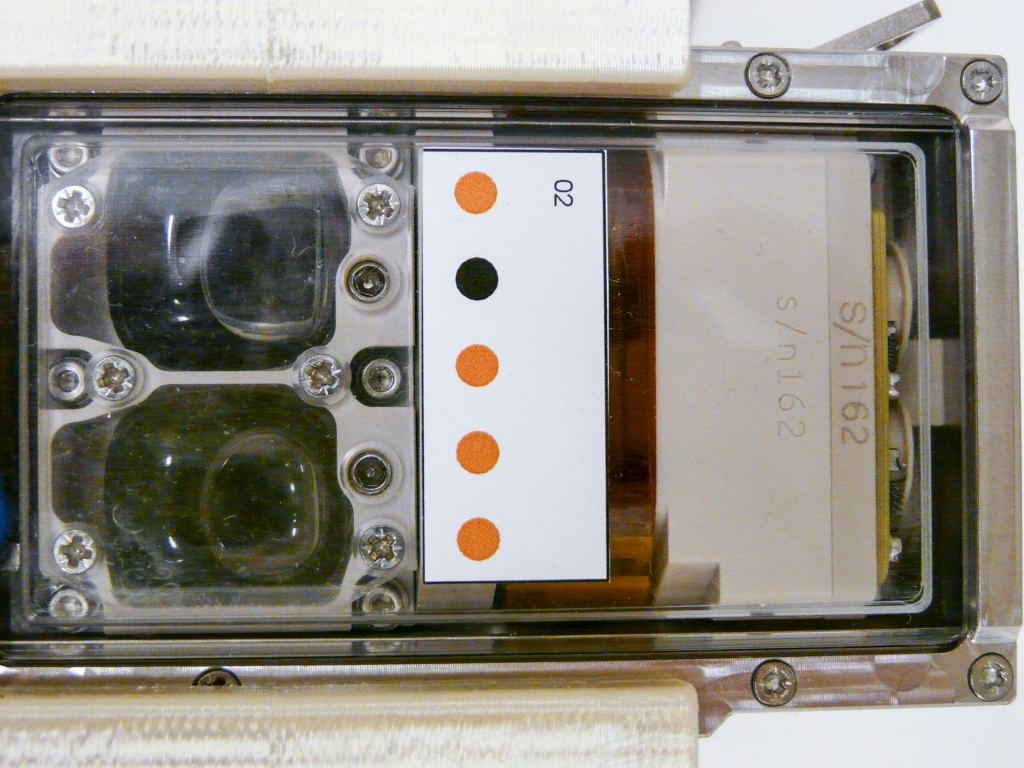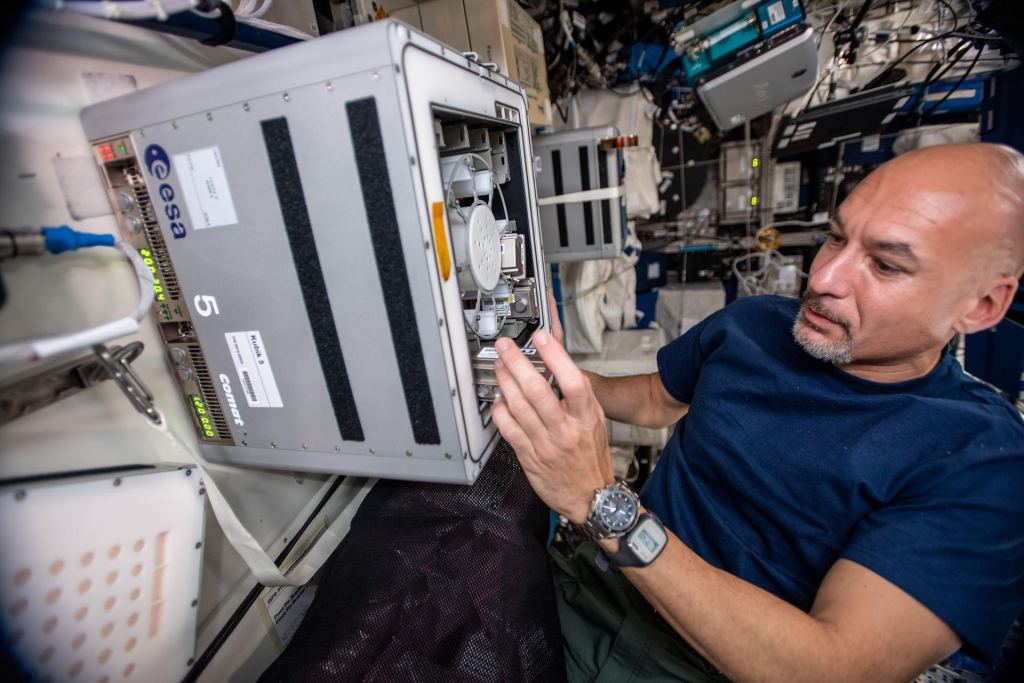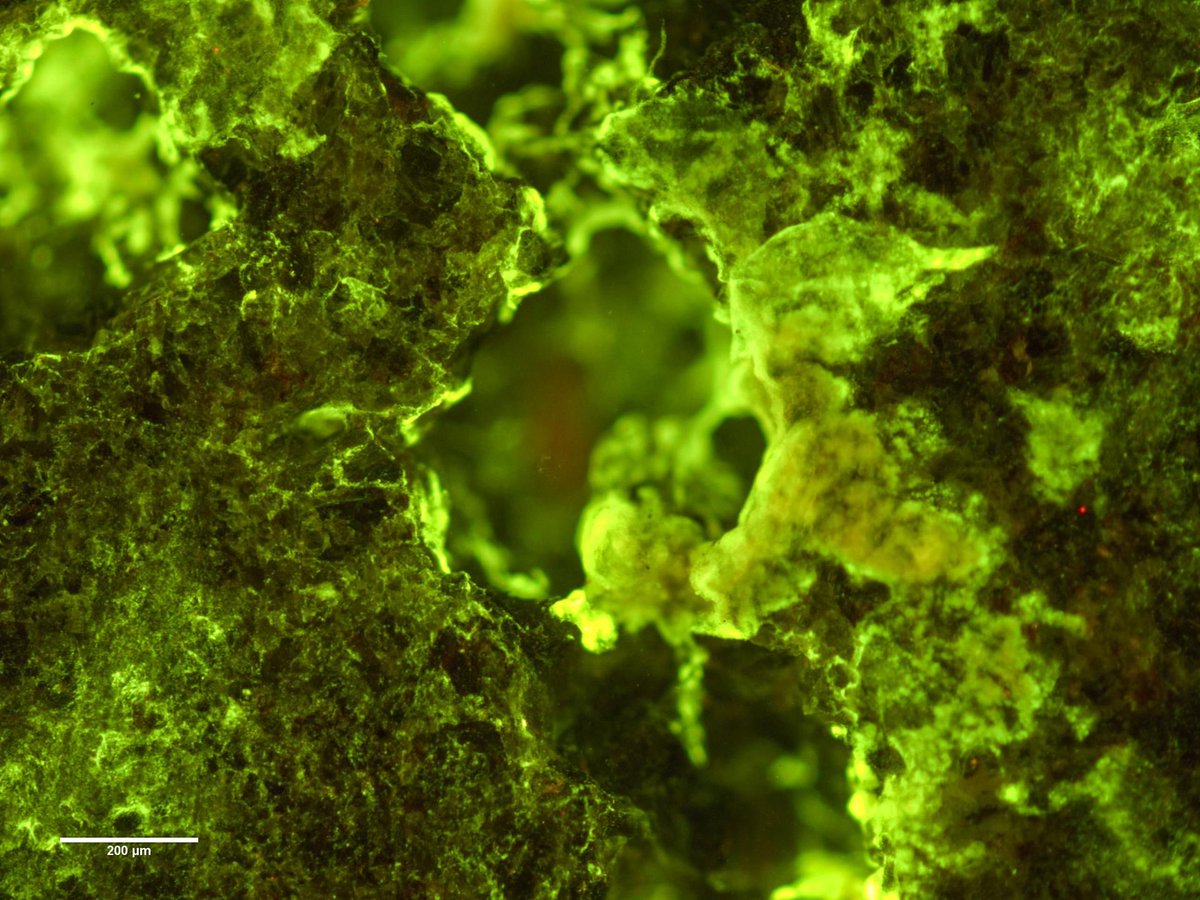History has viewed mining as a job that requires a lot of heavy machinery and physical labor. Pulling valuable material out of the ground has been necessary for human progress for thousands of years. That progress has led to an alternative method of getting those resources out of the Earth or other celestial bodies. The new technique relies on a symbiotic life partner that has co-habited with us for millennia – bacteria. A recent experiment conducted by ESA’s Biorock investigation team shows that this process – known as “biomining” – might be the most effective way to collect some materials in space.
The new research wasn’t the first space-based Biorock experiment. In 2019, the team showed that it could extract rare Earth elements (REEs) using a biofilm attached to basalt, a type of igneous rock that is also present on both Mars and the Moon. REEs, though found almost everywhere on Earth, are only present at minuscule levels. Mining them is prohibitively expensive using traditional methods for most locations, though they are widely used in various industrial processes and high technology products.
Credit – Anton Petrov YouTube Channel
REEs weren’t the only material of interest for the Biorock experiment, though. Although not a rare Earth element itself, vanadium is also widely used in industrial processes, including strengthening steel, making superconducting devices, and batteries. Data on the collection of vanadium was the focal point of the new paper, but that data was collected simultaneously with the original REE data.
Three different types of bacteria were used in the study – Sphingomonas desiccabilis, Bacillus subtilis, and Cupriavidus metallidurans. Astronauts fed them a kind of rock substrate known as R2A, a known growth medium for all three types of bacteria. Instead of crushing the basalt, as would most likely be done in large-scale bioreactors, the experimenters took thin slices of basalt collected from a quarry in Iceland that is remarkably similar to the basalts found on the Moon and Mars.
Credit – NASA Johnson YouTube Channel
After flight preparation and landing on the ISS, astronauts introduced the samples to a KUBIK incubator. Two of the experimental containers began spinning to simulate Martian and Lunar gravity. A third container was left stationary on the space station, while another container resided as a control at NASA’s Ames Research Center. Additionally, the researchers placed “sterile” chambers with no bacteria introduced into them at both locations and all gravity levels. These would be used as “controls” of the experiment to see how much vanadium was extracted from the basalt simply by the presence of the bacteria.
Initially, the team thought the differences in gravity would make a big difference in the effectiveness of the bacteria at collecting vanadium. Gravity has an essential effect on two fluid dynamics processes – sedimentation and convection – impacting how much exposure the bacteria would have to the substrate material.

Credit – ESA
But to their surprise, gravity seemed to have almost no impact on the effectiveness of the bacteria. The samples with Sphingomonas desiccabilis and Bacillus subtilis were much more effective than their sterile controls, producing on average 184% and 283% more vanadium on average across all three gravity levels.
One potential explanation for this lack of gravitational effect is mundane but essential – the length of the experiment itself (21 days) may have allowed the microbes to get as highly concentrated as they would have been able to. Shorter growth periods might show that sedimentation and convection have more of an impact on the microbe’s ability to access material if they aren’t fully saturating the media yet.

Credit – NASA
Either way, these Biorock experiments show the viability of using biomining techniques in space, at least at a small scale. Scaling up to the industrial processes required to mine the Moon or an asteroid economically would be a great leap forward, but, as with much science and engineering, it will require more research before any process can be proven effective. But maybe someday there will be ships with giant floating vats of microbes busily chewing away on the rocks collected from an asteroid.
Learn More:
NASA – Researchers Successfully Biomine Vanadium Aboard the Space Station
Frontiers in Microbiology – Microbially-Enhanced Vanadium Mining and Bioremediation Under Micro- and Mars Gravity on the International Space Station
SlashGear – NASA has biomined vanadium on the ISS using microbes
UT – Metal-Eating Bacteria Could Have Left their “Fingerprints” on Mars, Proving it Once Hosted Life
Lead Image:
Fluorescence microscopy picture of a Spingomonas desiccabilis biofilm growing on basalt before it was launched into space.
Credit – ESA

